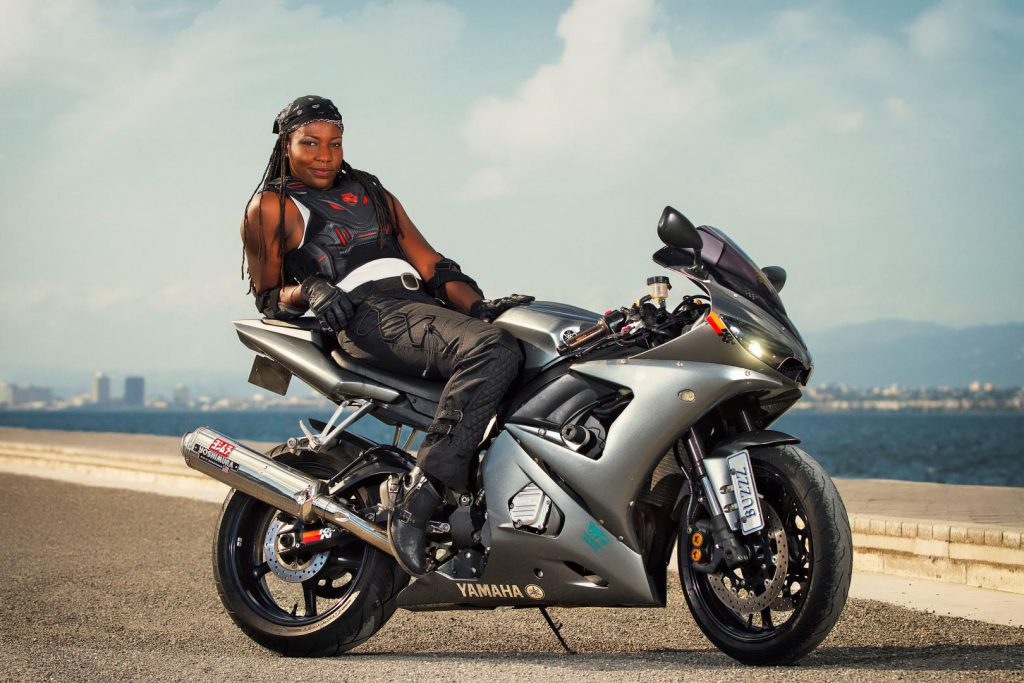It had arrived in San Francisco, California as a special guest of the ORACLE Corporation, for their annual Convention and, on arrival at the city’s Moscone Centre which was the venue, I came upon an unforgettable sight. Right there in the foyer, neatly parked facing each other, were two spanking new Ducati motorcycles, the pinnacle of the motorcycling world for many, in all their Ducati Red glory. Even if you were not a motorcycle aficionado, or just a novice, it was a spectacle hardly to be equalled.
But those fantasies of two-wheeled bliss with the wind whipping through my hair, were immediately tempered by other memories, tragic losses. There is, of course a happier medium. Motorcycles were meant to be enjoyed and can be enjoyed safely, even by relative novices. But, in order to have that enjoyment, and still remain in one piece to report on it, there are some requirements.
Don’t buy more bike than you can handle. When shopping for a bike, start with one that fits you. When seated, you should easily be able to rest both feet flat on the ground without having to be on tiptoes. Handlebars and controls should be within easy reach. Choose a model that’s easy for you to get on and off the centre stand; if it feels too heavy, it probably is. A smaller model with a 250- to 300-cc engine can make a great starter or commuter bike. If you plan on doing a lot of highway riding, you might want one with an engine in the 500- to 750-cc range so you can easily keep up with traffic.
Use your head. Helmets are an emotional topic for some riders, but the facts show the risks. Riders without a helmet are 40 percent more likely to suffer a fatal head injury in a crash and are three times more likely to suffer brain injuries, than those with helmets, according to government studies.
A full-face helmet, such as the ones endorsed and recommended by the United States Department of Transportation (DOT) is the best choice. Today’s helmets are strong, light weight, and comfortable, and they cut down on wind noise and fatigue. Also, helmets deteriorate over time and may not be safe even if they look fine. So helmets need to be replaced every five years or sooner (if it’s been damaged or in a crash) according to the Snell Memorial Foundation, an independent helmet-testing and standards-setting organization.
Hone your skills. As a biker and safety advocate, Tarik Kiddoe points out, there is nothing better the aspiring biker could do than to take a riding course. Awareness of the word “motor” is critical. “The number one cause of fatal motorcycle accidents, where no other vehicle is involved, is failure to negotiate a turn. This happens because most young riders aren’t aware of how a bike actually turns at speed. They panic and crash,” he explained.
Invest in safety features, like antilock brakes. Now available on a wide array of models, antilock brakes are a proven lifesaver. The US Institute of Highway Safety (IIHS) data shows that motorcycles equipped with ABS brakes were 37 percent less likely to be involved in a fatal crash than bikes without it.
The reason is simple: Locking up the brakes in a panic stop robs the rider of any steering control. That can easily lead to a skid and crash resulting in serious injury. ABS helps you retain steering control during an emergency stop, and it can be especially valuable in slippery conditions.
Wear the right gear. Jeans, a T-shirt and sandals may be how the movies have presented bikers, but they are recipes for a painful disaster. Instead, you want gear that will protect you from wind chill, flying bugs and debris. For maximum protection, go for a leather or other reinforced jacket, gloves, full pants and over-theankle footwear, even in summer.
Attitude. Kenute Hare, Director of Road Safety Unit in the
Ministry of Transport, explains that in many motor vehicle-motorcycle collisions, car drivers were at fault at least 60 percent of the times – this despite the perception of wayward and reckless riders (and yes, there are certainly those). So, you need to be extra alert and keep an eye out for cars suddenly changing lanes or pulling out from side streets. Keeping a safe following distance is also critical, both to ensure you have enough stopping distance and so you have time to react to obstacles in the road.
To Read More: Purchase your copy of Volume 9 #2– May – June 2017

